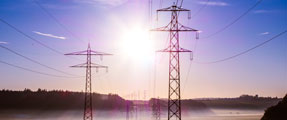On January 22, 2015, the Federal Energy Regulatory Commission (FERC) issued an order that granted in part and dismissed in part a complaint filed by PáTu Wind Farm (PáTu) against Portland General Electric Company (PGE). FERC agreed with PaTu’s essential complaint that PGE may not refuse to accept PáTu’s net electric energy output that is delivered to PGE’s system. FERC also: 1) dismissed PáTu’s arguments that PGE violated FERC’s standards of conduct; and 2) concluded that PáTu should seek monetary reparations in court or before the Oregon Public Utility Commission (Oregon Commission) rather than FERC itself.
PáTu is a nine megawatt wind facility in the wind rich part of eastern Oregon. PáTu is located in the service territory of Wasco Electric Cooperative (Wasco) and the balancing authority of Bonneville Power Administration (BPA). PáTu has agreements with both Wasco and BPA to transmit its power to PGE. In April 2010, PGE and PáTu entered into a power purchase agreement under the Public Utility Regulatory Policies Act (PURPA). PURPA requires utilities to purchase power from certain renewable and cogeneration facilities.
Since at least September 2010, PGE and PáTu have disagreed about how PáTu can deliver electricity and whether PáTu should be paid for all, or only part, of its net output. The case has major implications about the obligations of an electric utility to accept and pay for power from renewable resources like wind and solar that are located outside of a utility’s service territory. A ruling against PáTu could have made it very difficult for some variable renewable resources to be compensated for all of the power they produce.
PáTu first brought a complaint against PGE at the Oregon Commission, which denied the complaint in two orders in May 2012 and August 2014. The Oregon Commission, however, did not rule on a key aspect of PáTu’s complaint concluding that the issue should be resolved by FERC. PáTu then filed its complaint at FERC in October 2014.
The central aspect of PáTu’s complaint was that PGE refused to allow it to dynamically schedule the net electric output from its wind facility. PGE dynamically schedules the net output from its own wind generation, but refused to do the same for PáTu’s net output. Typically, electric generation resources that transmit their power between different utilities schedule their deliveries in whole megawatts on an hourly basis. This scheduling system was established for traditional electric generators like coal and gas that have predictable and reliable output. It is extremely difficult for variable solar and wind resources to meet hourly schedules in whole megawatts because they cannot control when the wind will blow or the sun will shine. Electric generators that cannot meet their schedules can pay penalties and may not be fully paid for all the power they produce. Dynamic scheduling can help solve this problem for variable resources. The details of dynamic scheduling are complex, but it essentially allows generators to update their schedules quickly to reflect changes in electric generation output. It is then much easier for wind and solar facilities to meet their schedules since they are updated frequently.
FERC did not resolve the dynamic scheduling issue, but instead concluded that PGE must purchase all of PáTu’s electric output from its wind facility. FERC concluded that PGE must use reasonable scheduling practices to accept and pay for all energy delivered. This could include dynamic scheduling. FERC explained that PGE cannot impose overly restrictive scheduling requirements that have the practical result of allowing PGE to avoid paying for all of PáTu’s net output. This decision should result PGE making greater efforts to schedule intermittent renewable resources and paying PáTu for all the net output delivered to PGE.
Disclaimer
These materials are intended to as informational and are not to be considered legal advice or legal opinion, nor do they create a lawyer-client relationship. Information included about previous case results does not assure a similar future result.


